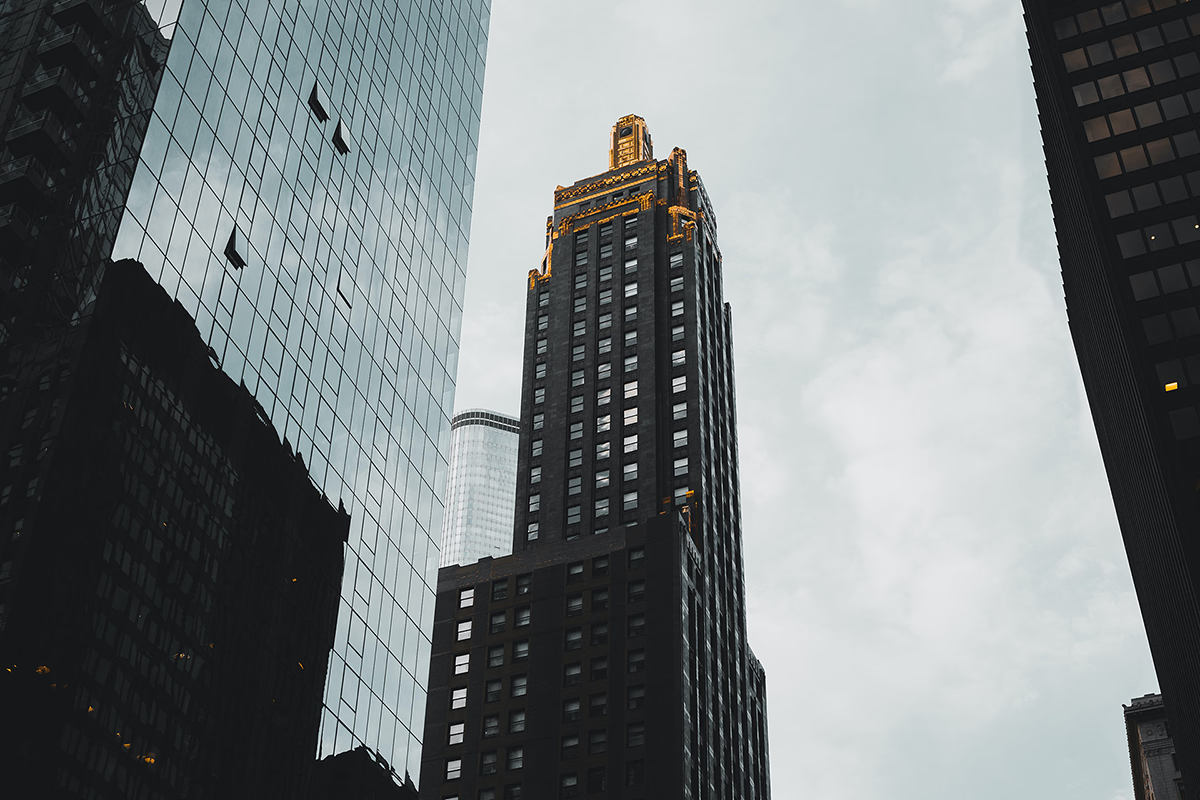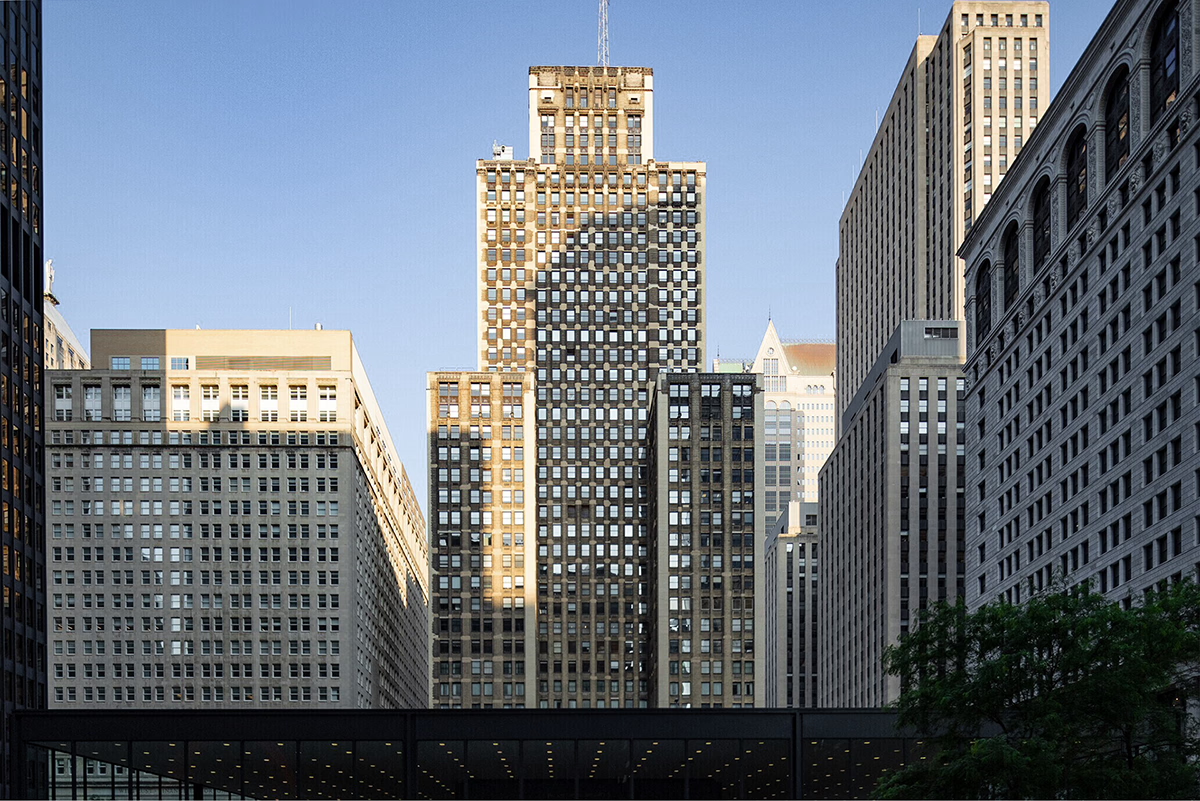Carbide & Carbon Building vs Clark Adams Building


Comparing the Carbide & Carbon Building and the Clark Adams Building is especially interesting because they share much in common. Both rise in Chicago, IL both were designed by Burnham Brothers, and they were completed within 2 years of each other.
This overlap gives us a unique opportunity to understand how Burnham Brothers approached different commissions in the same urban context and historical context during a short period.
Height & Size
These two towers present an interesting contrast in their proportions. The Carbide & Carbon Building rises higher at 502ft (153m), while the Clark Adams Building reaches 476ft (145m). However, the Clark Adams Building accommodates more floors with 41 levels above ground, compared to 37 floors in the Carbide & Carbon Building.
This suggests different approaches to interior space design. The Carbide & Carbon Building has an average floor-to-floor height of approximately 4.1m, while the Clark Adams Building has more compact floors averaging around 3.5m each. The taller building's more generous floor heights might indicate grander interior spaces, higher ceilings, or different programmatic requirements.
These different proportions likely reflect the specific needs each building was designed to serve, whether driven by zoning regulations, client requirements, or the intended use of the spaces within. The contrast shows how architects can achieve different spatial experiences even when working with similar overall building scales.
Architectural Style
Both the Carbide & Carbon Building and the Clark Adams Building were designed in line with the aesthetic conventions of the Art Deco style.
At the time, this style was at the height of its popularity. So Burnham Brothers followed what was in many ways expected at the time, producing designs that fit comfortably within contemporary architectural norms rather, than breaking with convention.
Uses
The Carbide & Carbon Building is primarily hotel, while the Clark Adams Building is primarily commercial.
Originally, the Carbide & Carbon Building was designed for commercial, but over time it was converted to hotel. The Clark Adams Building by contrast has maintained its original role.
Both towers incorporate hotels as part of their program. The Carbide & Carbon Building features a 4-star hotel with 396 rooms, while the Clark Adams Building includes a 4-star hotel with rooms. For more details, see the official website of the Carbide & Carbon Building.
Structure & Facade
Both the Carbide & Carbon Building and the Clark Adams Building rely on a Frame structural system.
A frame structure uses a grid of columns and beams to carry the building's loads. This frees the walls from structural duties, allowing for flexible floor plans and larger windows.
They also employ the same type of facade, a Masonry facade.
A masonry facade gives the building a heavier, more traditional appearance. It often conceals a frame structure behind it, creating the look of solid walls without carrying the main loads.
| Carbide & Carbon Building | Clark Adams Building | |
|---|---|---|
| Burnham Brothers | Architect | Burnham Brothers |
| 1928 | Construction Started | 1926 |
| 1929 | Year Completed | 1927 |
| Art Deco | Architectural Style | Art Deco |
| Hotel | Current Use | Commercial |
| 37 | Floors Above Ground | 41 |
| 153 m | Height (m) | 145 m |
| Frame | Structure Type | Frame |
| Steel | Vertical Structure Material | Steel |
| Reinforced Concrete | Horizontal Structure Material | Concrete |
| No | Facade Structural? | No |
| IL | State | IL |
| Chicago | City | Chicago |
| 230 Michigan Ave | Address | 105 West Adams Street |